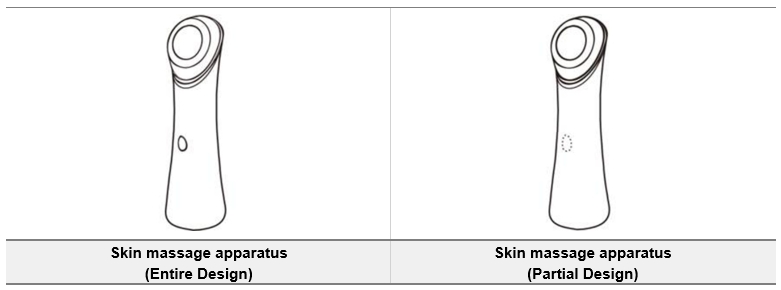The Design Examination Guidelines of the Ministry of Intellectual Property (MOIP; formerly KIPO) have been revised, effective as of June 16, 2025. Some of the more notable changes are outlined below.
Correction of the Standard Practice for Evaluating the Similarity between Entire Designs and Partial Designs
Prior to the entry into force of the amendment, the MOIP examiners would systematically deem a partial design, which only claimed some features of an article, dissimilar to a design that claimed all the features of an article, regardless of whether the compared designs were actually similar, despite the fact that nothing in the law justified this practice.
Over the years, this practice led to the registration of overlapping rights by different parties and at the same time, made it impossible for a design rights owner to register a partial design as a related design to a design registration for an entire article (and vice versa), even though the designs were similar.
For example, under the previous practice, the below two designs were regarded as dissimilar and thus registration for these designs could be obtained by different parties, while it would not be possible for the design owner to register either of them as a related design of the other:

The amendment was introduced to correct this practice and the MOIP examiners must now review in every case whether the claimed parts of a partial design are actually similar or not to a design for an entire article.
Clarification of the Practice for Automobile Interior Design Applications
Under Korean practice, it is possible to obtain separate design registrations for the features of an automobile, e.g. a design registration for the steering wheel, a design registration for the console box, etc. as each feature is recognized as an independent article. However, prior to the amendment, there was some disagreement among the MOIP examiners as to whether the combination of two or more automobile interior design features could be registered as a single design. Some examiners accepted such applications while others refused them.
The amendment clarifies that where a design claims various interior features of an automobile to the extent that such features integrally perform one particular function, the design should be recognized as a single design capable of being registered.
In its revised guidelines, the MOIP provides the following design as an example of a design claiming various interior features of an automobile that would be recognized as a single design capable of being registered:

Notification of Evidence Submission Failure when Exception to Loss of Novelty was Claimed
The revised guidelines provide that the MOIP examiners can issue a notification prior to issuing a decision to grant registration, if an applicant claimed an exception to loss of novelty in the application but failed to submit the evidentiary materials necessary to support the claim.
Prior to the revision, if an applicant failed to submit the evidentiary materials, the MOIP examined the application as though the exception to loss of novelty had not been claimed.
The notification will be issued in cases where it is clear that the failure to submit the evidentiary materials was an oversight of the applicant (or the applicant's agent) in order to give the applicant an opportunity to rectify it.






